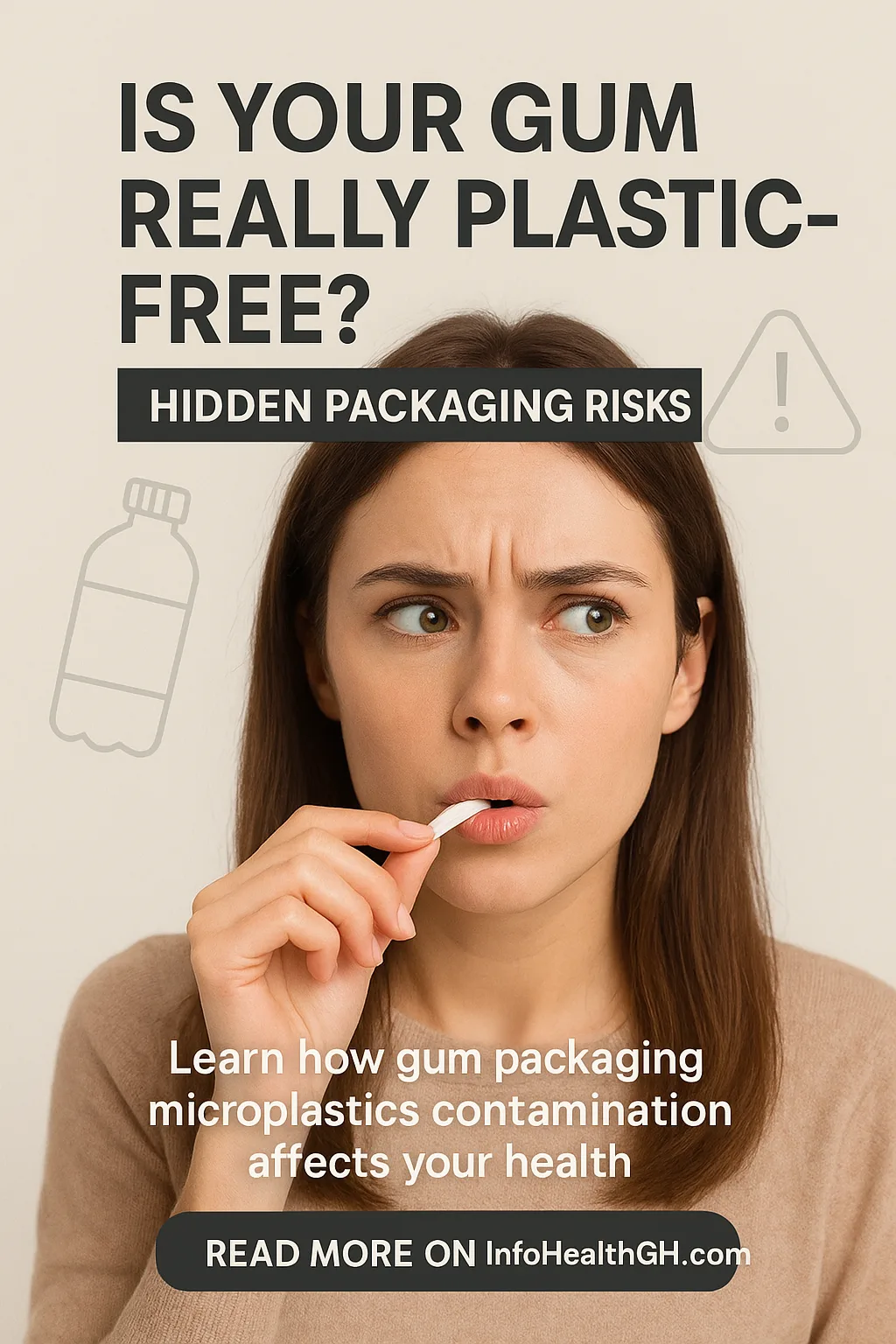Chewing gum has always been marketed as a harmless treat—sometimes even as a “natural” alternative for fresh breath or stress relief. But a surprising new health concern is emerging gum packaging microplastics contamination.
While many studies focus on microplastics in synthetic gum bases, recent evidence shows that even so-called natural gums may not be as clean as they seem. The culprit? Plastic packaging and production methods that introduce tiny, invisible particles into the gum before it ever reaches your mouth.

What Are Microplastics and Why Should You Care?
Microplastics are tiny fragments of plastic less than 5mm in size. They can come from broken-down plastic bottles, food wrappers, cosmetics, or even the friction of synthetic fibers in clothing. These particles are small enough to enter human tissues, and studies have already detected them in blood, lungs, brain tissue, and the placenta.
Health experts warn that long-term exposure may trigger inflammation, oxidative stress, and hormonal disruption. While scientists are still studying the full effects on human health, one thing is clear: reducing unnecessary microplastic exposure is a smart move.
Read Also: The Surprising Link Between Gut Health and Anxiety: How Your Digestive System Affects Your Mind
How Natural Gum Becomes Contaminated
When people choose natural chewing gums—often made from tree resins like chicle—they assume they are avoiding synthetic plastics. Unfortunately, gum packaging microplastics contamination can undo that healthy choice.

Here’s how it happens:
- Plastic Wrappers – Most gums, even natural brands, are wrapped in thin plastic or foil-plastic composites that can shed particles into the gum.
- Production Lines – Industrial conveyor belts, packaging seals, and cutting machines often use plastics that come into direct contact with gum.
- Storage & Transport – Heat and friction during shipping can accelerate microplastic release into the gum before it’s even opened.
In other words, even before you start chewing, your “plastic-free” gum may already be carrying microscopic fragments.
Read Also: How to Stop Sugar Cravings Naturally at Night: 7 Proven Strategies
Why Packaging Contamination Matters More Than You Think

Recent studies suggest that both synthetic and natural gums release microplastics when chewed—but the surprising part is that natural gums aren’t necessarily safer. In some cases, gum packaging microplastics contamination accounts for just as much exposure as the gum base itself.
That means switching to natural gum won’t completely eliminate your risk unless the brand also commits to plastic-free packaging. Consumers who chew gum daily could be swallowing tens of thousands of particles each year—without realizing it.
Read Also: Early Signs of Iron Deficiency in Women: Symptoms, Causes, and What You Need to Know
What You Can Do to Minimize Microplastic Exposure

If you enjoy chewing gum, here are practical steps you can take:
- Choose brands with eco-friendly packaging – Look for gums sold in compostable wrappers, paper boxes, or glass jars instead of plastic blister packs.
- Chew fewer pieces – Instead of multiple sticks a day, chew one piece for longer periods.
- Support sustainable brands – Some gum makers are actively shifting toward biodegradable bases and non-plastic packaging.
- Dispose responsibly – Never spit gum on the street; when littered, it hardens and becomes a long-term plastic pollutant.
FAQs About Chewing Gum and Microplastics
1. Is chewing natural gum safe from plastics?
Not entirely. Even if the gum base is natural, plastic packaging can contaminate it.
2. Do all gums release microplastics?
Most studies suggest both synthetic and natural gums release microplastics, but the levels vary.
3. How can I avoid gum packaging microplastics contamination?
Opt for brands with paper or compostable packaging, and limit gum chewing frequency.
4. Are microplastics in gum harmful?
Definitive human studies are still ongoing, but evidence from lab studies suggests potential health risks over time.
Chewing gum may seem like an innocent daily habit, but research shows it could be a hidden source of plastic exposure. Gum packaging microplastics contamination means that even natural gums may not be as clean as they appear.
The good news? Consumers have power. By choosing eco-friendly brands, reducing gum use, and demanding safer packaging, you can lower your exposure while supporting sustainable change in the food industry.



